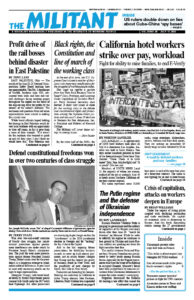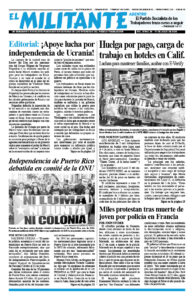NEW YORK — Working people here are once again facing rising rents as the city’s Rent Guidelines Board voted June 21 to increase rents by the highest amount in a decade on some 1 million rent-stabilized apartments.
Rents for a one-year lease will rise by 3% and 6% by the end of a two-year lease, starting in October. The decision affects 2 million families, comprising a quarter of the city’s population, who live in rent-stabilized apartments.
“I see more and more of my neighbors being displaced because they are on fixed incomes and their income doesn’t rise,” Queens resident Sabah Munawar said at a June 12 rent board hearing in Jamaica, Queens, reported Spectrum News. “And the [board] passed a huge increase last year.” It jacked rents up 5% on a two-year lease in 2022.
The ruling by the unelected nine-member rent board comes after several public hearings held across the city where hundreds of working people protested the proposed increases. They expressed outrage over the already high rents they’re paying, and that more raises will lead to more evictions, homelessness and greater difficulty being able to both live and work in the city.
Housing costs are rising faster than workers’ wages. A 2021 city survey found that one-third of those renting apartments in New York paid landlords over half of their income. A Moody’s Analytics report said that as of the end of last year on average workers in the city were forced to put a staggering 68% of their wages toward rent.
Board members are appointed by the mayor. Supposedly two represent the interests of the landlords, two the renters, and the rest represent the “public.”
They tried to justify the hikes with claims that small landlords with just a few tenants are feeling the pressure of rising prices and need relief. The 5-4 vote approving the increases included the votes of the “representatives” of the tenants.
After the vote, Mayor Eric Adams praised the increase, claiming it was “ensuring small property owners have the necessary resources to maintain their buildings and preserve high-quality, affordable homes for New Yorkers.”
“But many landlords of rent-stabilized buildings are big companies,” the New York Times noted after the meeting, like “Cammeby’s, Lefrak and L&M Development, who each have several thousands of rent-stabilized units in their portfolios, in addition to market-rate units.”

